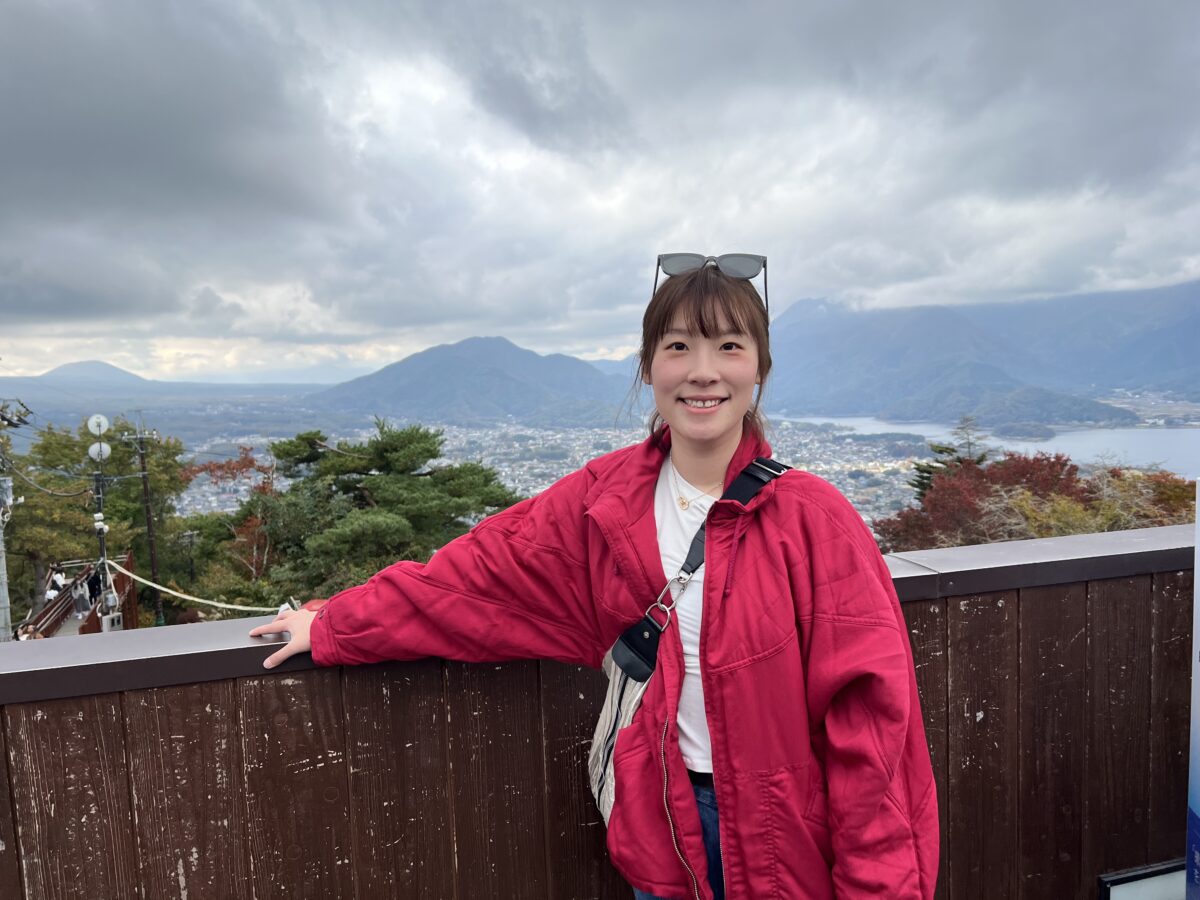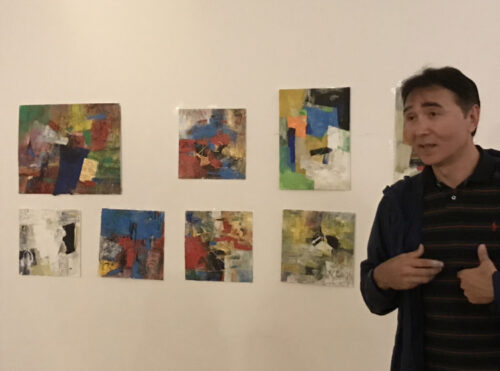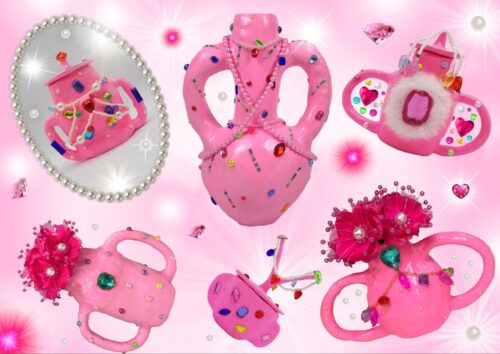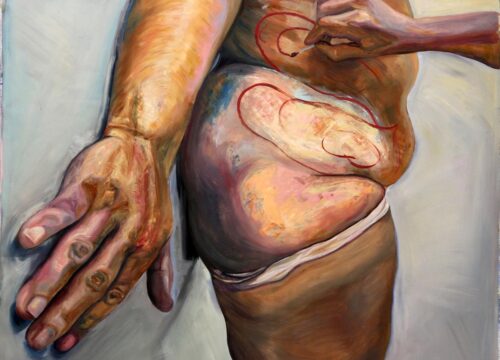Asia Society’s ‘Mirror Image’ exhibition presents new perspectives on Chinese art
The latest exhibition at the Asia Society spotlights a group of wildly talented Chinese artists born after 1976, the year of Mao Zedong’s death, and contemplates the ever-changing Chinese identity in the context of globalization.

In 1998, a groundbreaking exhibition put together by the Asia Society caused enthusiastic ripples among art lovers and critics in the U.S. Curated by art historian Gāo Mínglù 高名潞, the sprawling show, titled Inside Out: New Chinese Art, was the first of its kind to survey more than 80 works created between 1985 and 1998 by artists from the mainland, Taiwan, and Hong Kong. Featuring a significantly greater range of artistic media than any previous exhibition of contemporary Chinese art, the show offered visitors a window into how “transnational forces,” as termed by Gao, influenced Chinese artists’ lives and ideas.
Fast forward to 2022 and the Asia Society’s latest exhibition, Mirror Image: A Transformation of Chinese Identity, which opened in New York in June and will run through December. As a sequel of sorts to 1998’s seminal event, the exhibition poses a crucial question: What is meant by “Chinese” art in the age of globalization and digital revolution, where ideas fluidly cross geographic, generational, and cultural boundaries?
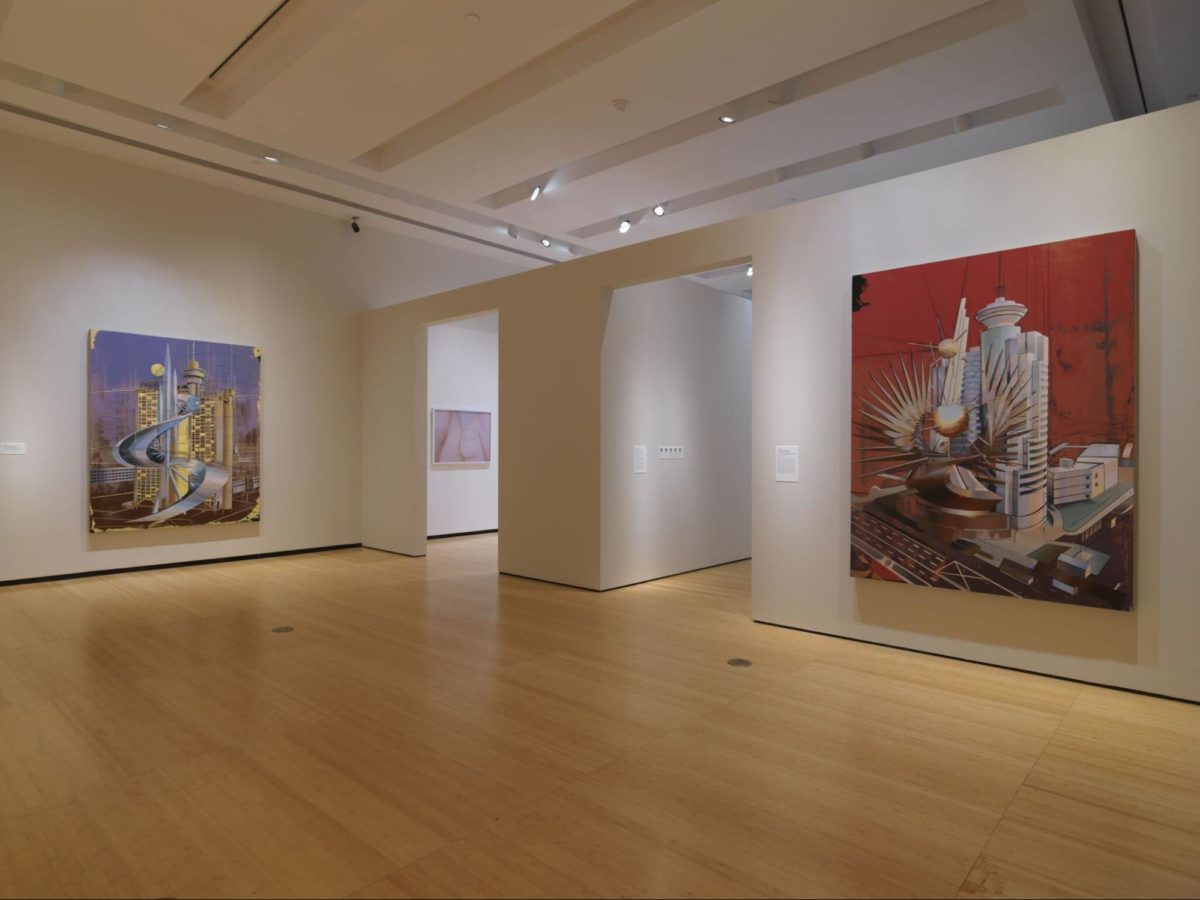
The idea for Mirror Image came about in 2019, when the director of the Asia Society Museum encountered Brand New Art From China: A Generation on the Rise, a book by veteran arts journalist Barbara Pollack about the generation of Chinese artists who emerged in the 1980s. Pollack was approached and asked to make a proposal. The exhibition was initially scheduled to take place in 2020, but the COVID-19 pandemic caused it to be pushed to this year.
“A mirror image is supposed to capture the reality, but it distorts the reality a little bit also. So I’m not saying that this is an accurate reflection of China. Rather, I’m saying that this is my perspective on the changes in China and their impact on art,” Pollack, the show’s main curator, told The China Project.
China news, weekly.
Sign up for The China Project’s weekly newsletter, our free roundup of the most important China stories.
With a vibrant collection of photographs, installations, and short films, the thoughtfully and tightly curated exhibition puts forward 19 artworks by seven artists who were born in mainland China in the 1980s, a unique period characterized by the one-child policy and an influx of foreign capital. As members of China’s so-called “post-80s generation” (八零后 bālínghòu), most of the participating artists came to age in the 2000s, which was a critical requirement for Pollack when she selected which artists to include from a pool of nearly 150 candidates.
“When I met people like Ài Wèiwèi 艾未未 or Cài Guóqiáng 蔡国强, it was very important to them that their work evoke a Chinese identity. You can tell their work is made by a Chinese person from a football field away,” said Pollack. But the younger generation is no longer interested in that type of iconography. They are interested in the world they grew up in.”
Walking through the exhibition, one would be challenged to find any remnants of the traditional East-West dichotomy that has dominated the older generations of Chinese artists. Compared to the 1998 exhibition, noticeably missing at Mirror Image are Chinese motifs like dragons and key traditions in Chinese art, such as ink-painting and calligraphy. Instead, a new transnational sense of self and global thinking is on display, front and forward.
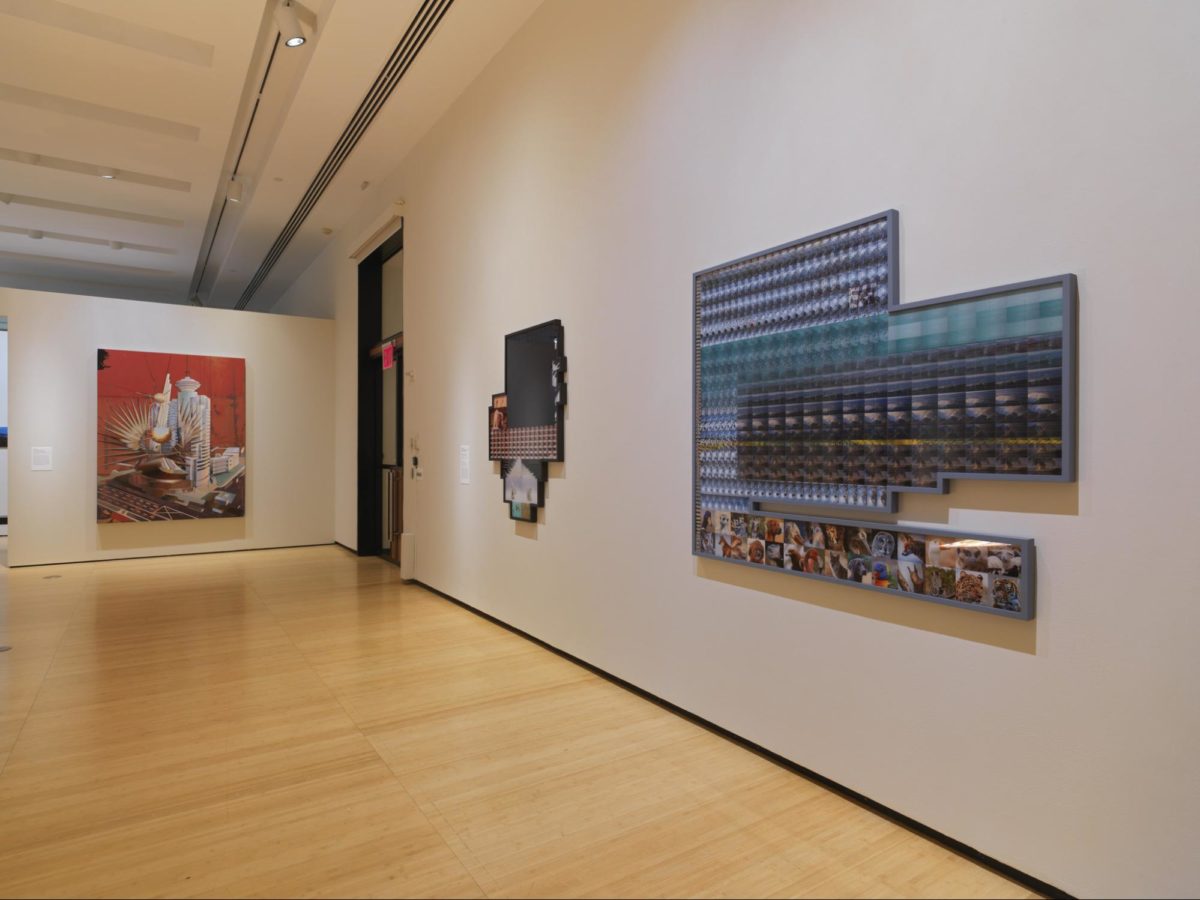
The first work to catch one’s eye in the show is an installation by Nàbùqí 娜布其. Influenced by Pop artists such as Richard Hamilton and Andy Warhol, the Beijing-based artist assembled a catalog of mass-produced furniture for “How to Be ‘Good Life,’” which resembles the look of a typical living room, but with each object covered in fabrics printed with photographs of historical landmarks around the world.
The installation is Nabuqi’s jab at the lack of originality in consumerism and the invasion of pop culture in personal spaces. It’s also “kind of the heart of the exhibition,” Pollack said, as it is representative of how the global economy works.
“She originally created the installation in Beijing in 2019, using furniture she bought from Ikea. But we couldn’t ship the installation to the U.S. because of all the restrictions on shipping from China. So instead, she sent us a shopping list and we went online to shop what we needed from Ikea and eBay,” Pollack said. “We were on Zoom and she directed us how to place several things. We recreated the installation here and I feel like it’s a perfect example of how globalization is extending the reach of Chinese artists.”
Gender and sexuality are two prominent themes in the works of participating artists. In “Experimental Relationship,” an ongoing photography series by Pixy Liao (廖逸君 Liào Yìjūn), the Shanghai-born, Brooklyn-based artist uses self-portraits to upend the traditional notions of heterosexual partnerships, showing herself take on a dominant role without diminishing her partner.
Meanwhile, featured artist Táo Huī 陶輝 drew inspiration from period soap operas, a popular genre of television in China, and sprinkled them with elements of gender fluidity and queer aesthetics in a photography project named “Similar Disguise Stills.” Each photo in the series represents a still scene from his reimagined drama, which strictly features characters of gender minorities — queer, transgender, or non-binary — whose representation in the mainstream media is minimal due to censorship.
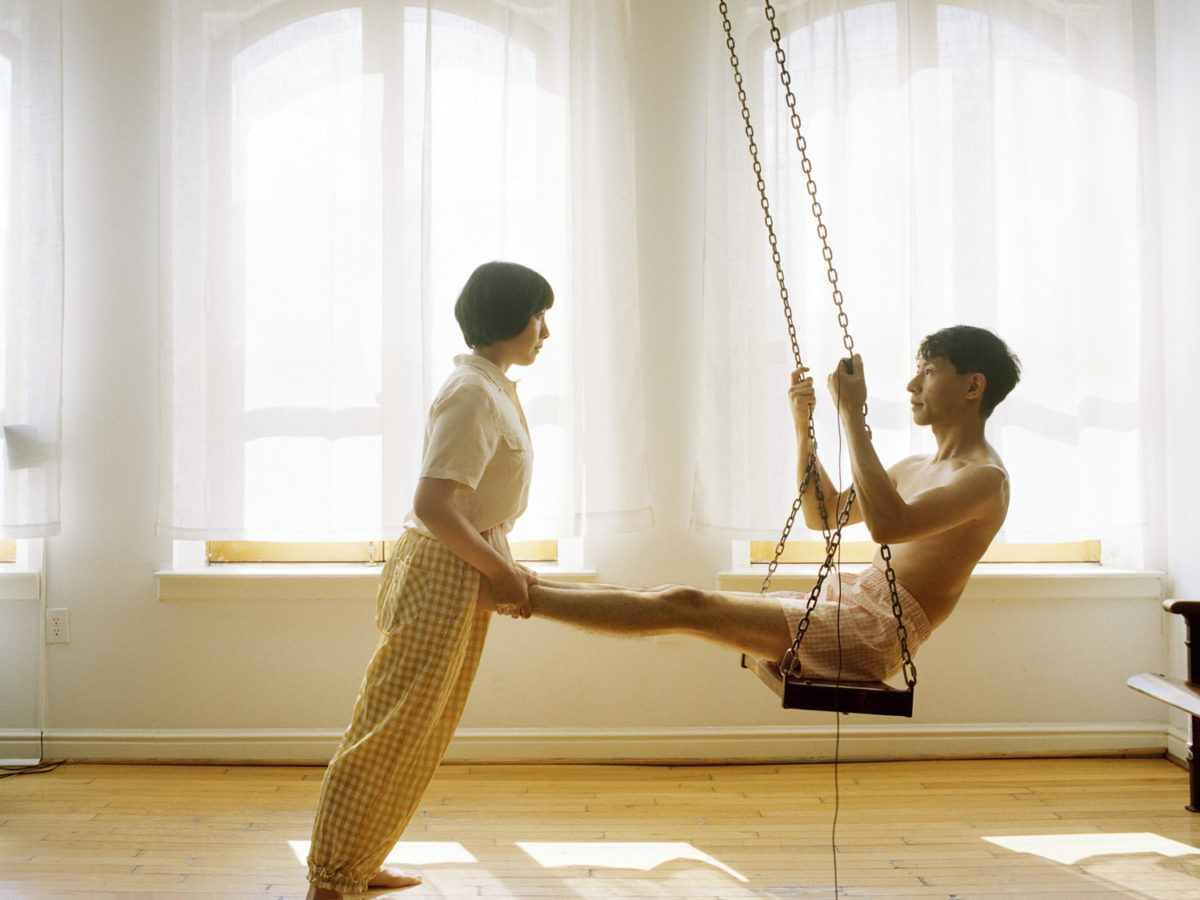
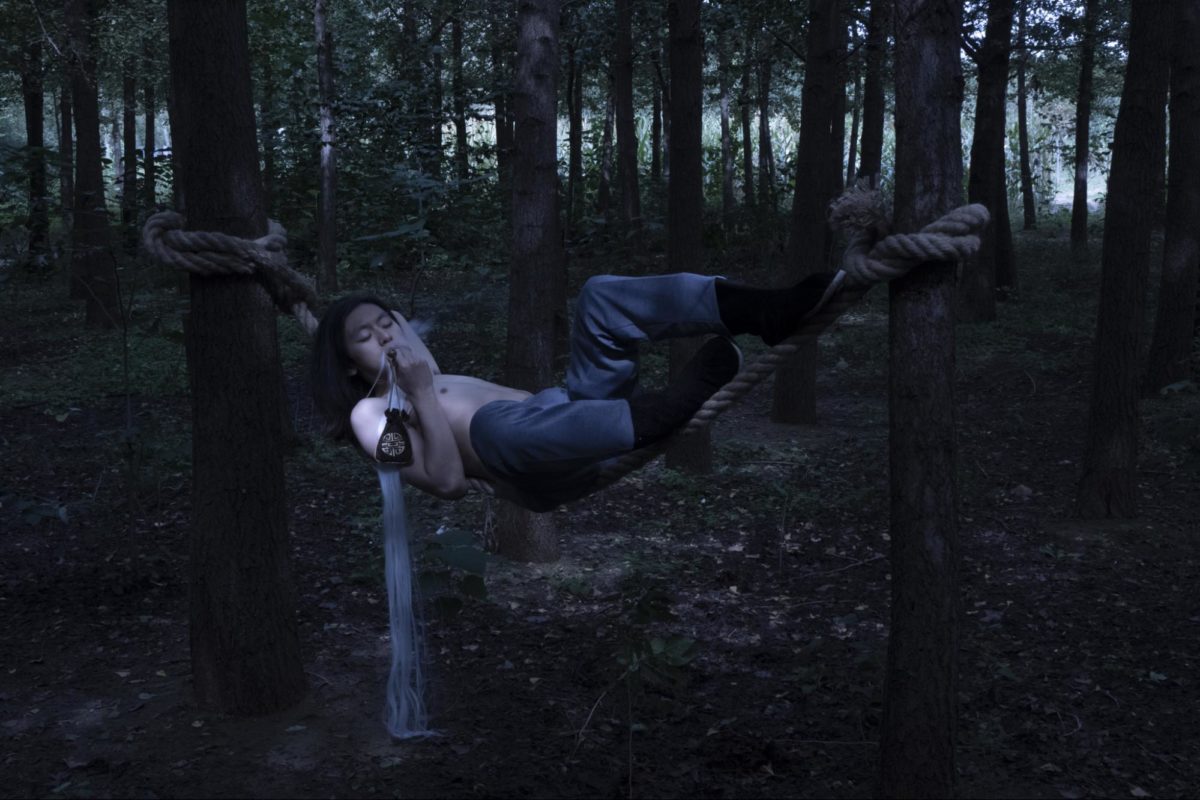
The fluidity of identity and gender roles in their works are “partially a rebellion against what’s going on in society,”according to Pollack. To Pixy Liao, she is rebelling against a government that “is telling women to get married and have more babies,” Pollack said, “whereas someone like Tao Hui is looking for ways to express gay identity despite the fact that depictions of homosexual couples are banned on television and in films.”
When it comes to approach, working with new mediums and cutting-edge technology seems to be another quality that sets post-80 Chineses artists apart from their predecessors. For her short film “Surplus Intelligence,” Miáo Yǐng 苗颖, who is best known for her digital media projects that subtly critique China’s Great Firewall and sociopolitical media propaganda, makes use of an artificial intelligence-powered text-generating system to write the script. “It’s almost like a science fiction story set in the past, but it’s about the technology of the future,” she recently told Wired.
Also on display are a collection of canvas paintings by Shanghai-based artist Cuī Jié 崔洁, where she incorporates aspects of Cubism to convey the surreal juxtapositions of modern high-rises and historic buildings, an architectural transformation that’s happening around the country. Beijing-based performance artist Chén Tiānzhuó’s 陈天灼 part of the exhibition features a video called “Trance,” which features seven minutes of excerpts from his 12-hour theatrical performance that premiered at the M Woods Museum in Beijing in 2019.
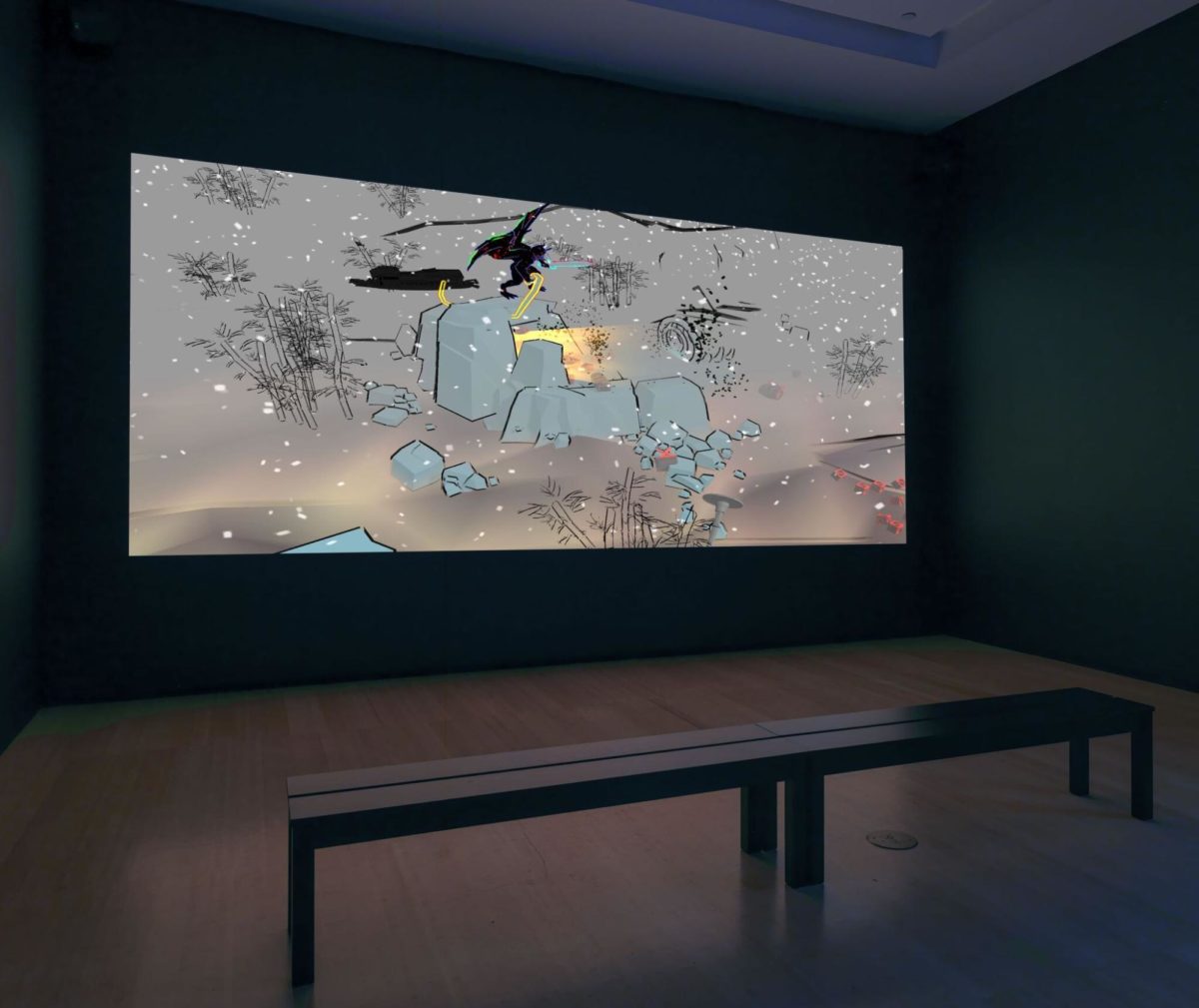
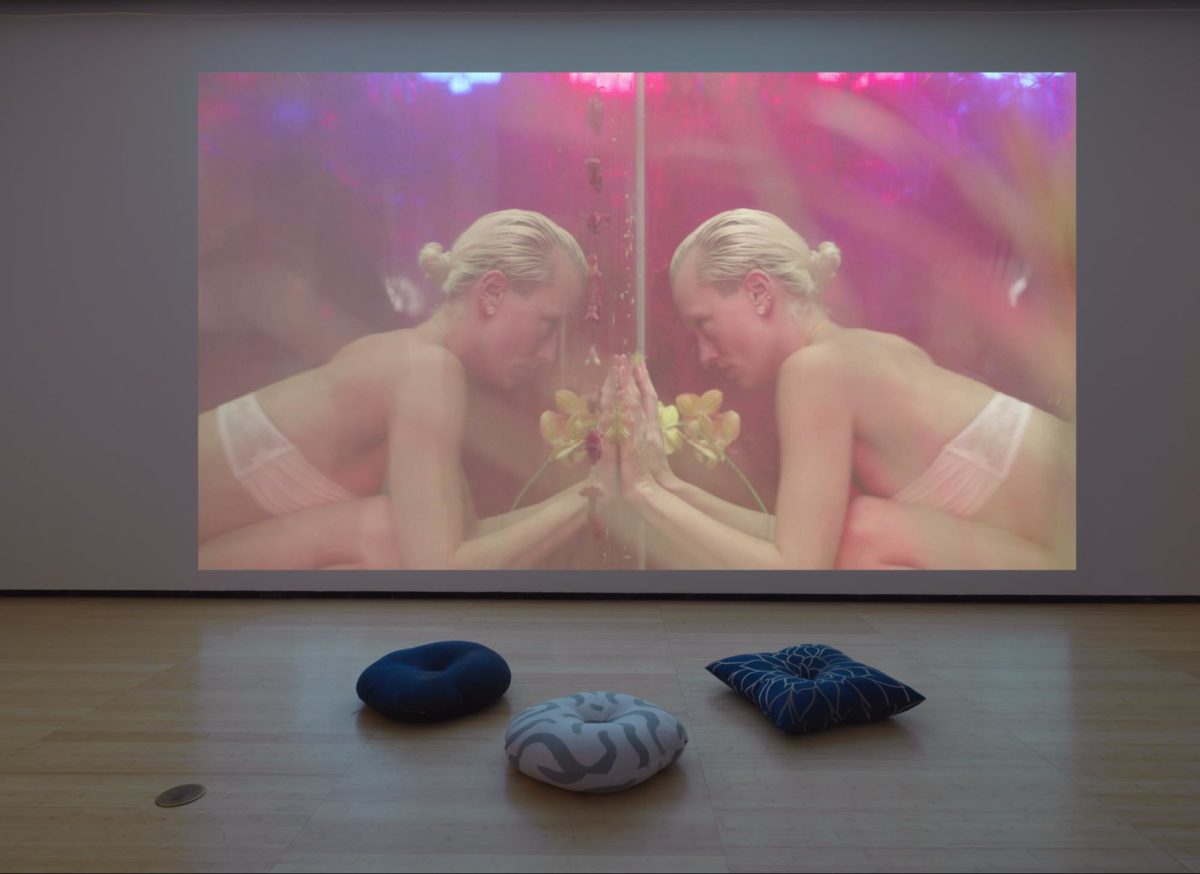
“China is no longer a country of dragons and thrones,” Pollack said of the biggest takeaway that she hopes viewers will leave the exhibition with.
“It was brave of the Asia Society to do this,” she added. “People expect Chinese art to look a certain way but they were willing to do things differently.”
Mirror Image: A Transformation of Chinese Identity will run at the Asia Society Museum until December 31, 2022.
